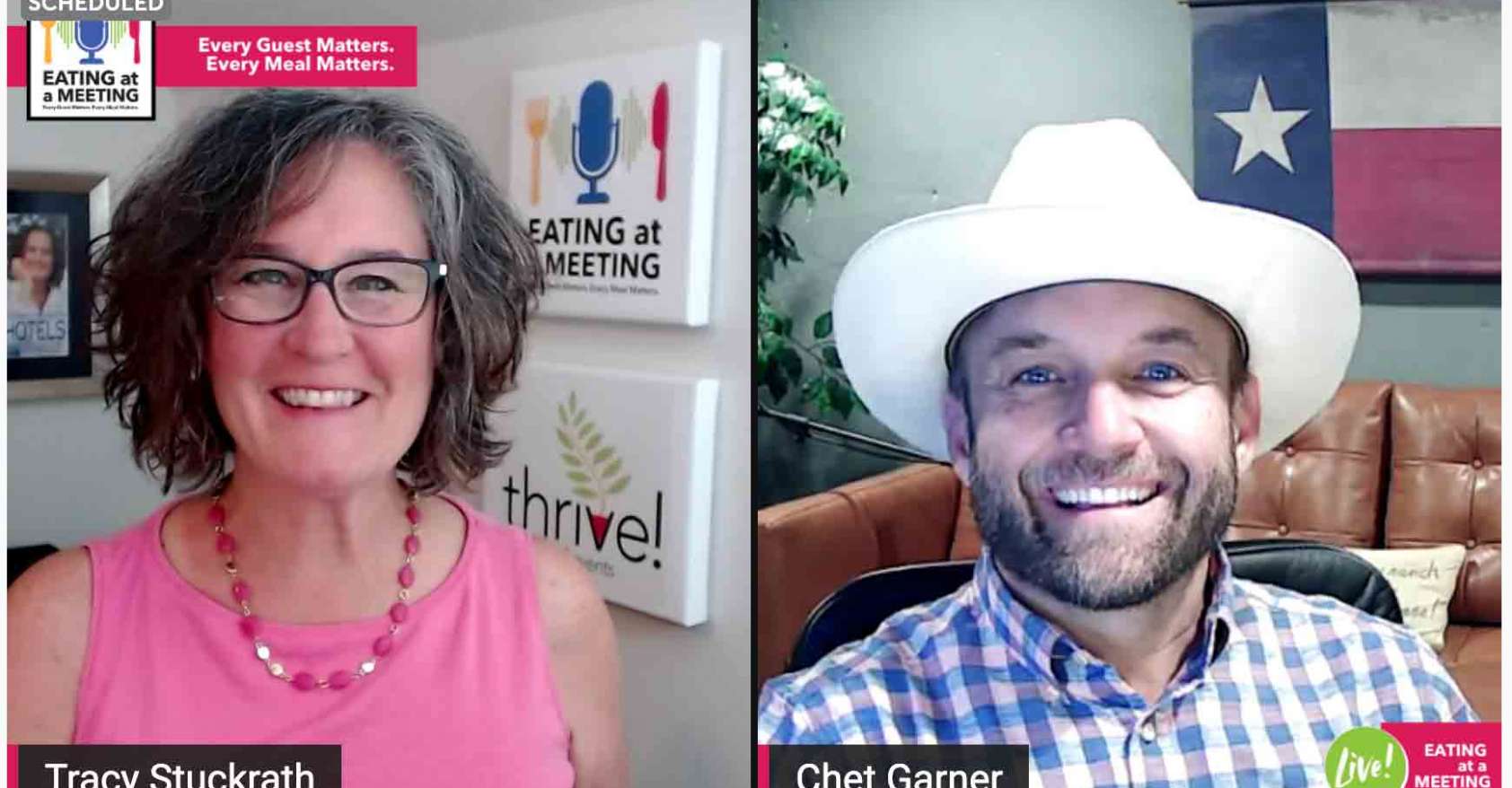Chet Garner, The Daytripper loves eating his away across Texas exploring the history, people and places that make the state great in Episode #142 of the Eating at a Meeting podcast.


Chet Garner, The Daytripper loves eating his away across Texas exploring the history, people and places that make the state great in Episode #142 of the Eating at a Meeting podcast.

Food allergies are an invisible disability that Gwen Smith wants to make visible. She chats with Tracy on Eating at a Meeting about that.

October is Disability Employment Awareness Month – a time where we recognize the contributions of people with disabilities in our workforce. It’s also the opportune time to educate ourselves on how to be more accommodating for our colleagues and coworkers who may have a disability. It’s been 10 years since the Americans with Disabilities Act (ADA) was amended in 2008, but educating employers and employees alike about the changes has proven to be a long and difficult process. Whether a CEO, an HR professional, an event professional or a manager, you should know that individuals with food allergies, celiac disease…

Keep an Employee’s Invisible Disability in Mind at Company Events The definition of an invisible disability in simple terms is a physical, mental or neurological condition that limits a person’s movements, senses, or activities that not visible to the eye. And, because the symptoms of the disability are invisible, it makes the disability misunderstood and ignored. Examples of an invisible disability include, but are not limited to peanut allergy, celiac disease and diabetes. In 2008, the Americans With Disabilities Act was amended to to add additional terminology to major life activities as defined in the original law enacted in 1990.…

We know what disabilities are, and I discussed invisible disabilities in, “Thrive! With Invisible Disabilities, Part One.” In part two, I want to chat about some of the behaviors and concepts that will help illustrate dietary restrictions and invisible disabilities. As a reminder, invisible disabilities are also called hidden disabilities because they are restrictions that aren’t clearly visible or apparent. Food allergies and intolerances are included when we talk about invisible disabilities because, just like asthma, arthritis, and other conditions, diseases, and dysfunctions, we can’t see the challenges those with invisible disabilities may be experiencing. The Americans with Disabilities Act…

We know what disabilities are, right? If anyone asked, we would be able to chat intelligently about basic difficulties faced by those with disabilities, such as access, accommodations, bullying, and legal protections. What about invisible disabilities? The Americans With Disabilities Act of 1990 (ADA) defined a disability as any individual with a physical or mental impairment that substantially limits one or more major life activities. The 2008 extension of the Act was written to include those with allergies, including food allergies. It was updated to better recognize invisible disabilities. Invisible disabilities, also called hidden disabilities, as the term suggests, are…

Dear Meetings Industry, In June 2016, I attended Meeting Professionals International (MPI) World Education Congress. As usual, the international conference was well attended and a wonderful gathering of top industry professionals. We studied food and beverage topics, budgeting, international trends, hybrid and virtual meetings and more. Added to this year’s event was a celebration of inclusion … mostly. Unfortunately, the convention occurred on the heels of the tragic LGBT nightclub shooting in Florida, where 49 people were killed, over 50 were injured, and over 200 were held hostage until the gunman’s death, when police stormed the club around 2 a.m.…
